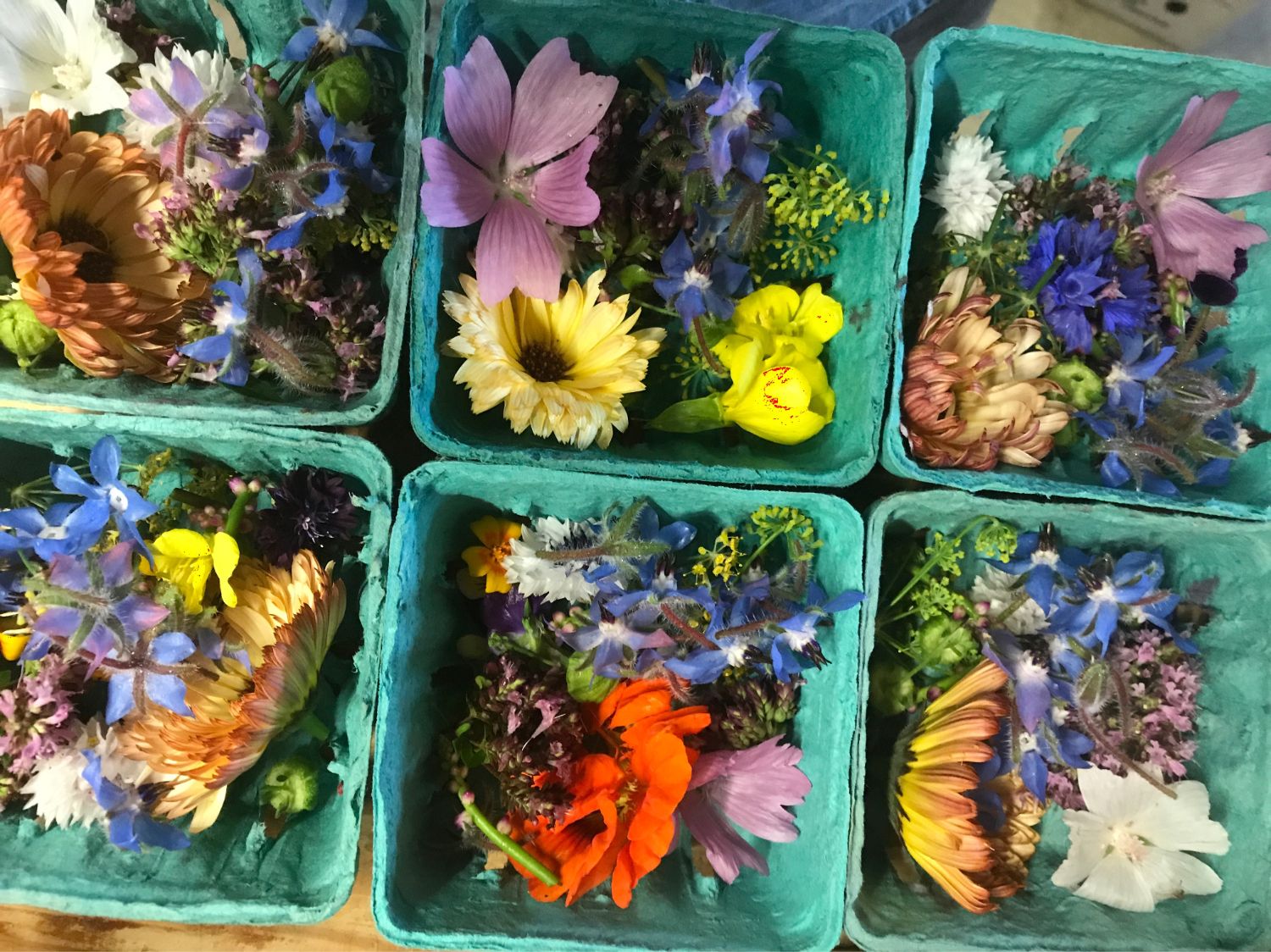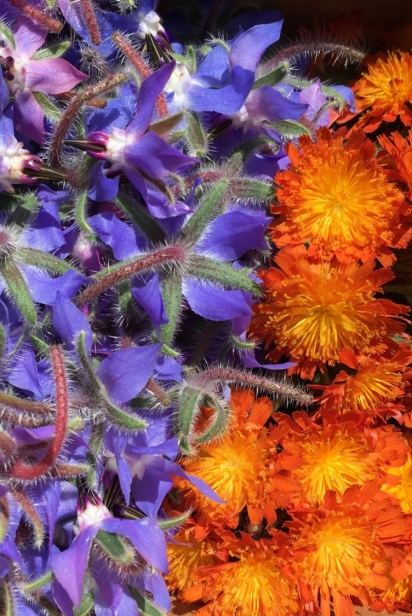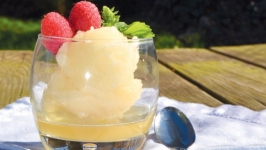Edible Flowers
Fragrant, beautiful and tasty flowers in food and beverages are often considered exclusive to high-end restaurants or special occasions. Au contraire—one just needs to know which flowers are edible and how to prepare them.
While they’re occasionally sold for the purpose of consumption, edible flowers are easily grown or foraged. Picked flowers, especially without their stems, have a short life and must be kept cool, so it’s best to harvest them in morning or evening.
Use caution when choosing which flowers to eat. Understanding how to identify a flower and knowing which parts are edible or relying on a trustworthy source is recommended. Avoid eating anything treated with pesticides. “Borrowing” some flowers from someone else’s decorative flowerbed may put you at risk unless you know their growing practices. Don’t eat the beauties along roadways, either, as the plants are exposed to direct vehicle exhaust and possibly chemicals used for road and roadside maintenance. Also, some edible flowers can be hard to digest in large portions.
The uses of flowers in or on food are endless. Flavors range from sweet to bitter to peppery, and may take on attributes of their fruit, vegetables or leaves (herbs). Sprinkle petals or whole flowers on salads, chilled soups, entrees or desserts. Flowers have also been candied for centuries. And for both culinary and medicinal purposes, they have traditionally been used in syrups, conserves, tinctures, breads, teas and stocks.
Flower-Adorned Beverages
Floating various flowers in a punch bowl or clear glass dispenser with fresh herbs and lemon slices elevates a summer gathering. Edible flowers can also be frozen into ice cubes or whatever vessel shape one may choose.
Marigold (Calendula officinalis)
The flavor of this flower varies and can be tangy, spicy, bitter or peppery. It’s referred to as the “poor man’s saffron.” Some claim the flavor is similar, but I think it’s mostly because a marigold is much less expensive and can impart a yellowish or orange color to a dish like costly saffron. It can be used in chicken feed to help produce a brighter yellow yolk. Note: Only the petals are edible.
Marigold petals, like many edible flowers, are revered for their numerous medicinal benefits. They’re believed to be immune boosters and gastrointestinal anti-inflammatories. They’re also used topically for rashes, stings, wounds, burns, chicken pox and cold sores. It’s documented that medieval Europeans knew the marigold’s benefits. They drank it in fermented spirits as a comforter of heart and soul.
This Latin proclamation proves millennia of appreciation. It means, “I, borage, bring always joy.”
In the culinary world borage is well known for its flavor and symmetrical beauty with five triangular petals. They hold the essence of summer with their refreshingly mild honey-like sweetness and cucumber finish. Most mature from a pink to a majestic blue. White borage flowers do exist, but are less common.
Eating them fresh is a joy. However, Italians have traditionally cooked them in ravioli and pansoti. The Polish, at times, use them to flavor pickles. Germans incorporate them into a fresh uncooked green herbed sauce called Grüne Soße. Borage flowers are also an original garnish for the famous Pimm’s Cup cocktail.









